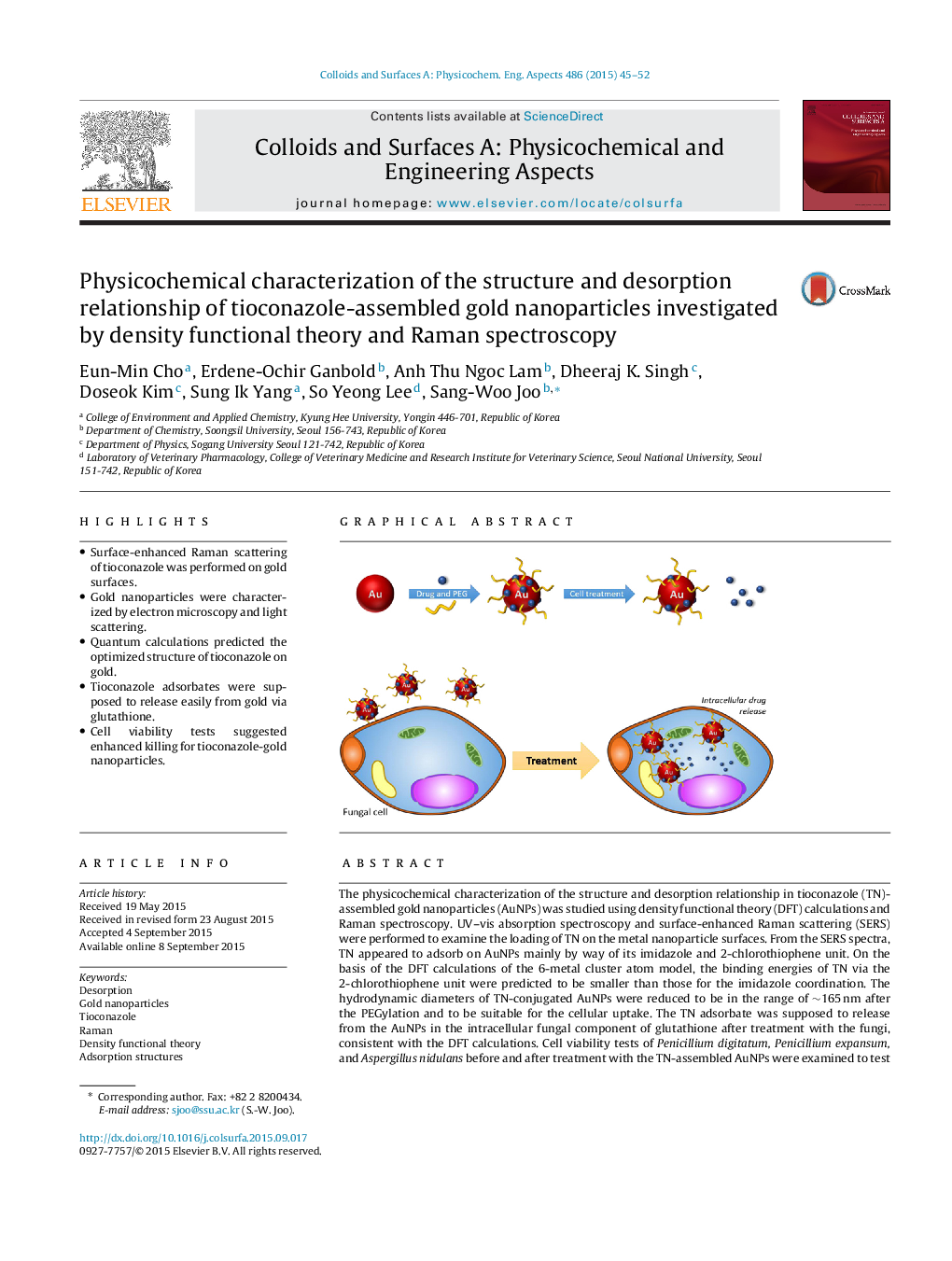| کد مقاله | کد نشریه | سال انتشار | مقاله انگلیسی | نسخه تمام متن |
|---|---|---|---|---|
| 591922 | 1453887 | 2015 | 8 صفحه PDF | دانلود رایگان |
• Surface-enhanced Raman scattering of tioconazole was performed on gold surfaces.
• Gold nanoparticles were characterized by electron microscopy and light scattering.
• Quantum calculations predicted the optimized structure of tioconazole on gold.
• Tioconazole adsorbates were supposed to release easily from gold via glutathione.
• Cell viability tests suggested enhanced killing for tioconazole-gold nanoparticles.
The physicochemical characterization of the structure and desorption relationship in tioconazole (TN)-assembled gold nanoparticles (AuNPs) was studied using density functional theory (DFT) calculations and Raman spectroscopy. UV–vis absorption spectroscopy and surface-enhanced Raman scattering (SERS) were performed to examine the loading of TN on the metal nanoparticle surfaces. From the SERS spectra, TN appeared to adsorb on AuNPs mainly by way of its imidazole and 2-chlorothiophene unit. On the basis of the DFT calculations of the 6-metal cluster atom model, the binding energies of TN via the 2-chlorothiophene unit were predicted to be smaller than those for the imidazole coordination. The hydrodynamic diameters of TN-conjugated AuNPs were reduced to be in the range of ∼165 nm after the PEGylation and to be suitable for the cellular uptake. The TN adsorbate was supposed to release from the AuNPs in the intracellular fungal component of glutathione after treatment with the fungi, consistent with the DFT calculations. Cell viability tests of Penicillium digitatum, Penicillium expansum, and Aspergillus nidulans before and after treatment with the TN-assembled AuNPs were examined to test the feasibility of developing an efficient drug delivery system. After 24 h treatment, TN-adsorbed AuNPs exhibited enhanced fungal cell killing according to a Student t-test (p < 0.05) in comparison to free TN at concentrations of 0.005–0.1 μM.
Figure optionsDownload as PowerPoint slide
Journal: Colloids and Surfaces A: Physicochemical and Engineering Aspects - Volume 486, 5 December 2015, Pages 45–52
